Rock Creek House, an adaptive re-use project of a 1920’s brick structure, was originally composed of two floors, with a mechanical basement and attic. This adaptation leverages the robustness of the existing structure to capture the attic and basement to double the house’s size, while expanding its functions into the landscape.
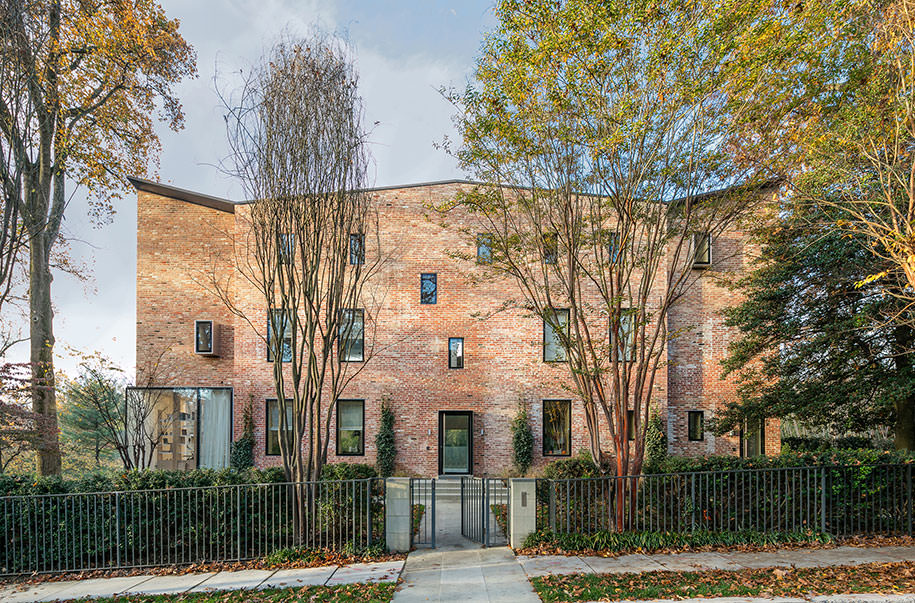
While the northern street façade remains relatively intact, the southern exposure to Rock Creek is more generous. By expanding the areas of glazing and establishing a more precise relationship between rooms and their respective apertures, a new architectural order is established on the south. It is more informal, open and in dialogue with nature.
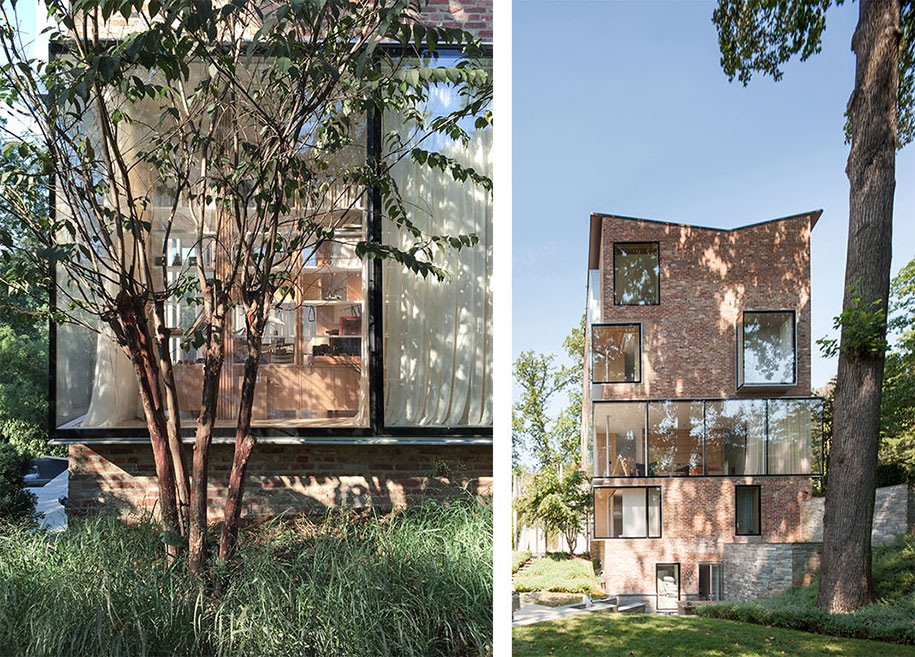
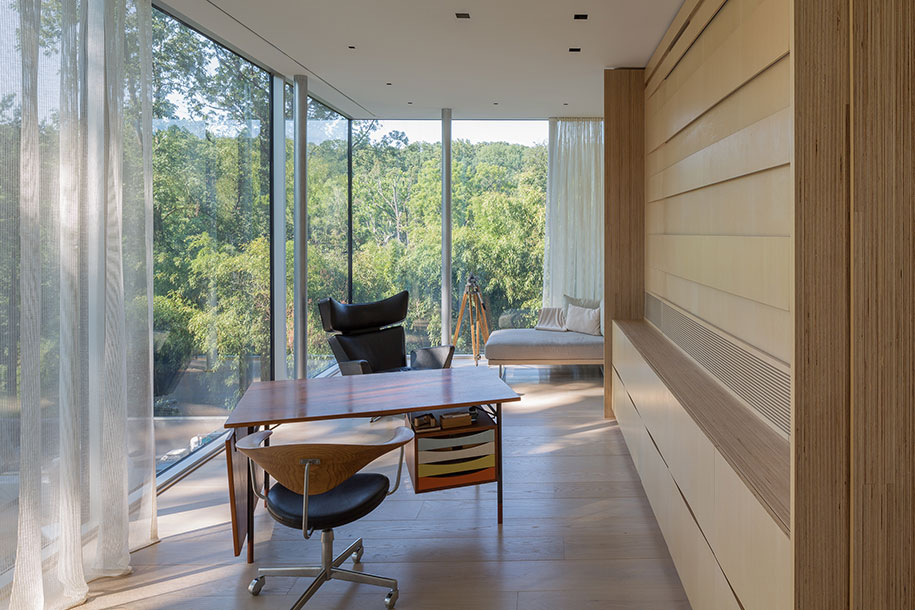
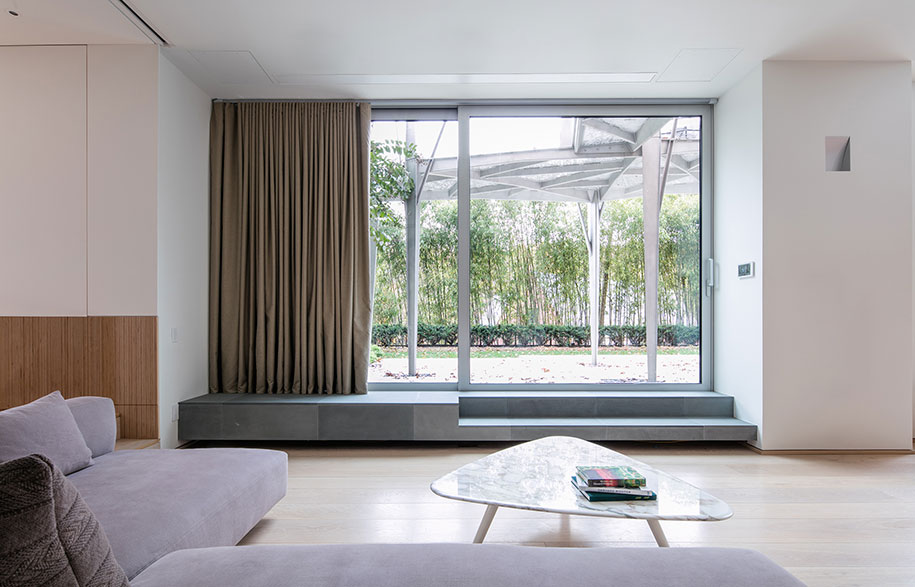
The perimeter brick structural wall, around a north-south bias, marks the axial transition of formal and closed spaces on the north, to the informal and exposed spaces of the south. In correspondence to this, internal structural framing runs east-west, connecting the brick party walls, while topped with a cladding of laminated plywood that serves the program of the house, running north-south in tandem with the orientation of the house. All elements are incorporated into these laminar striations: stairs, closets, seats, window frames, among other components.
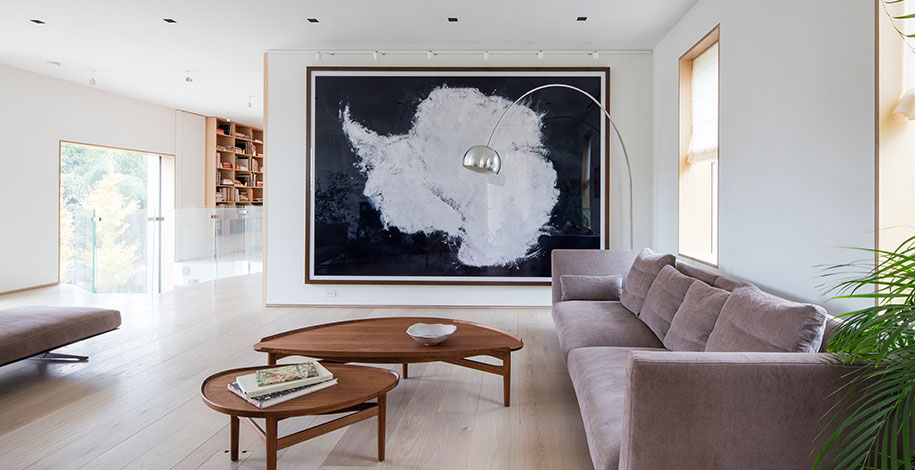
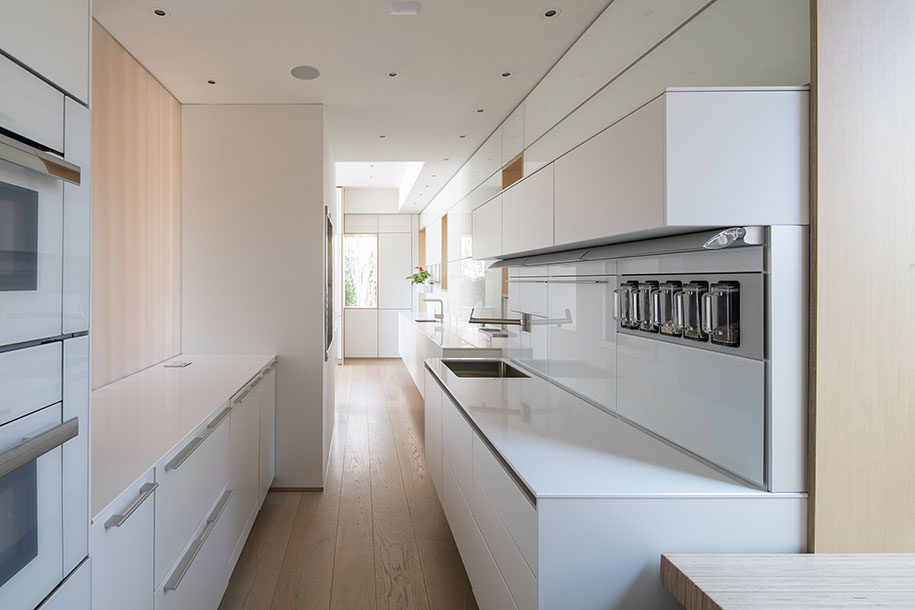
From a solid facade on the North to a transparent and glazed facade to the south, the tectonics of the Rock Creek house reinforce this transformation.
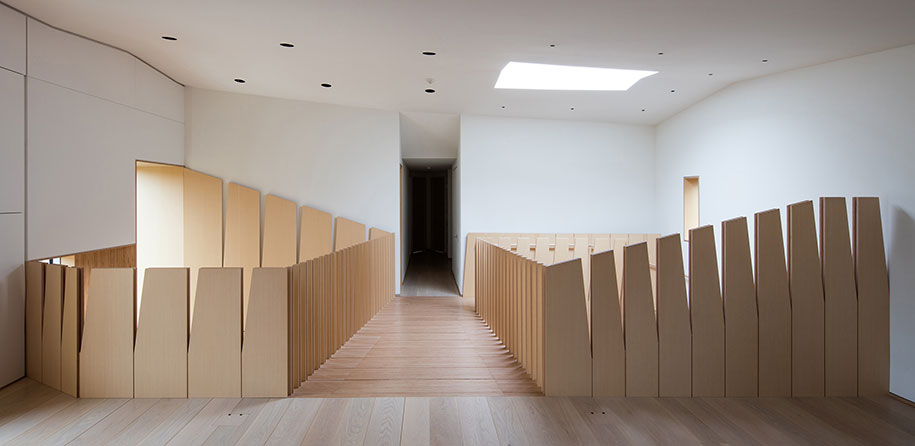
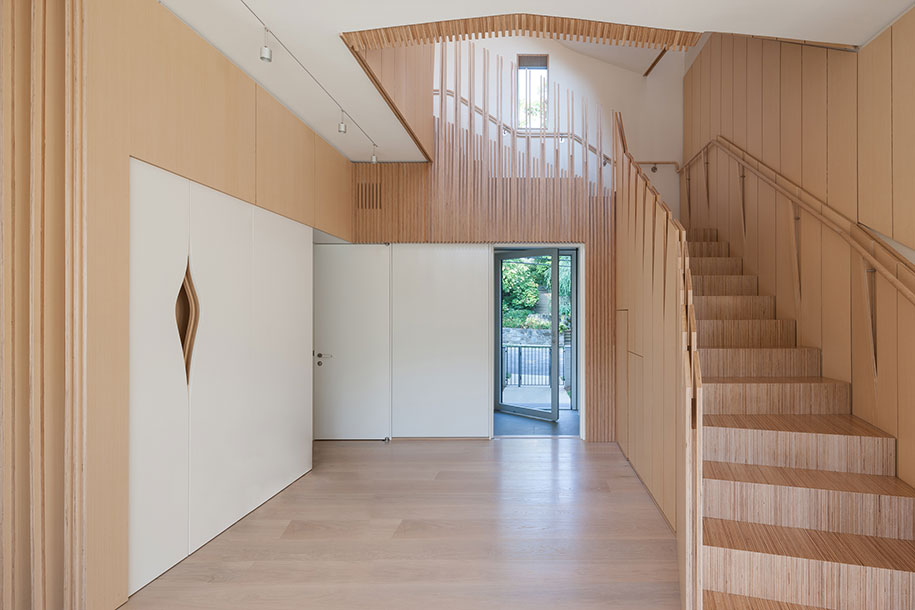
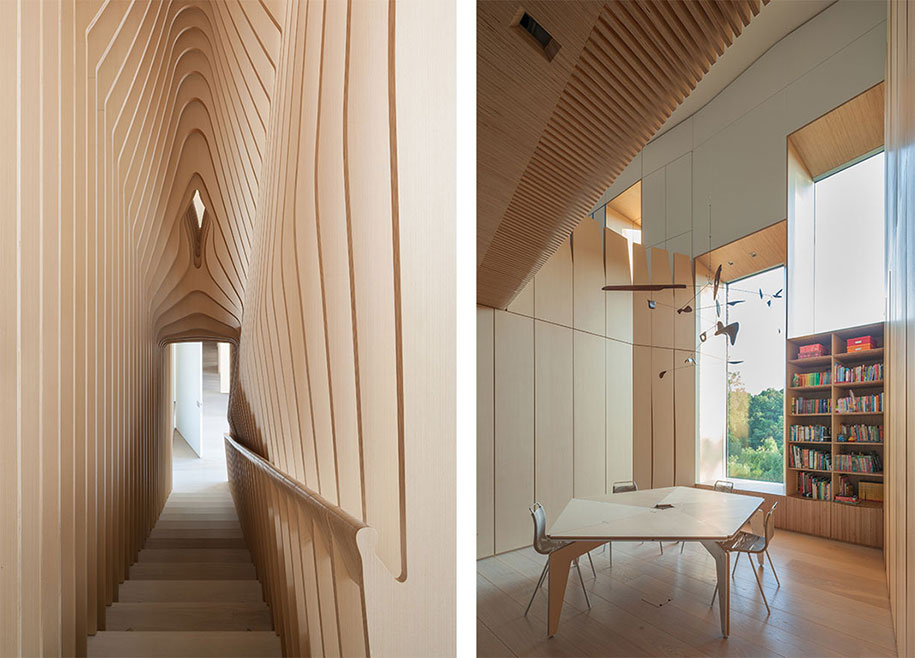
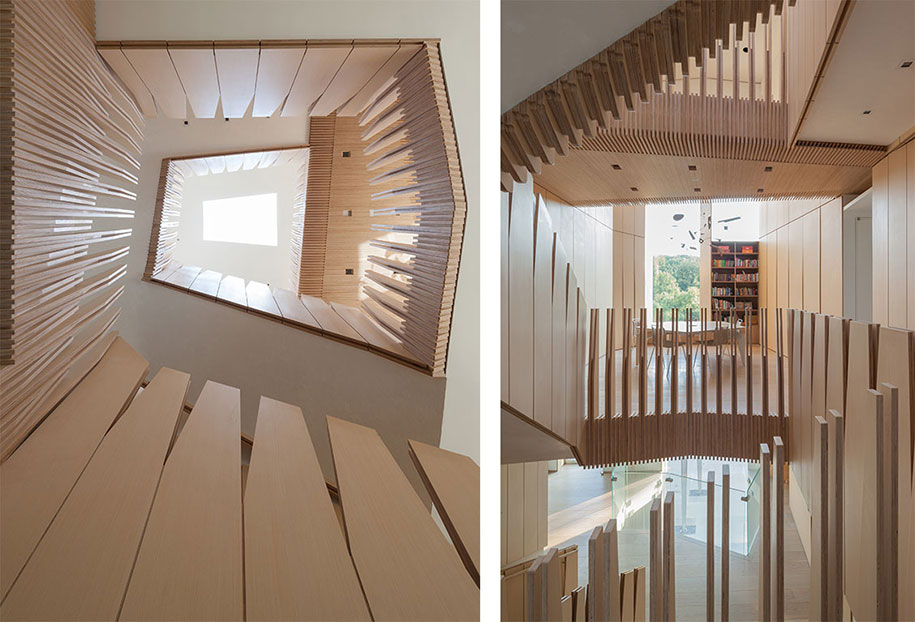
The most salient spatial intervention is the introduction of two multi-height spaces. One connects the entry level down to the garden level, with a living room that extends to the southern landscape. The second vertical space connects the entry up to the former attic, now a play loft capped by a skylight. With these two interventions the once stratified realms of storage, bedrooms, work areas, and living areas become seamlessly intertwined.
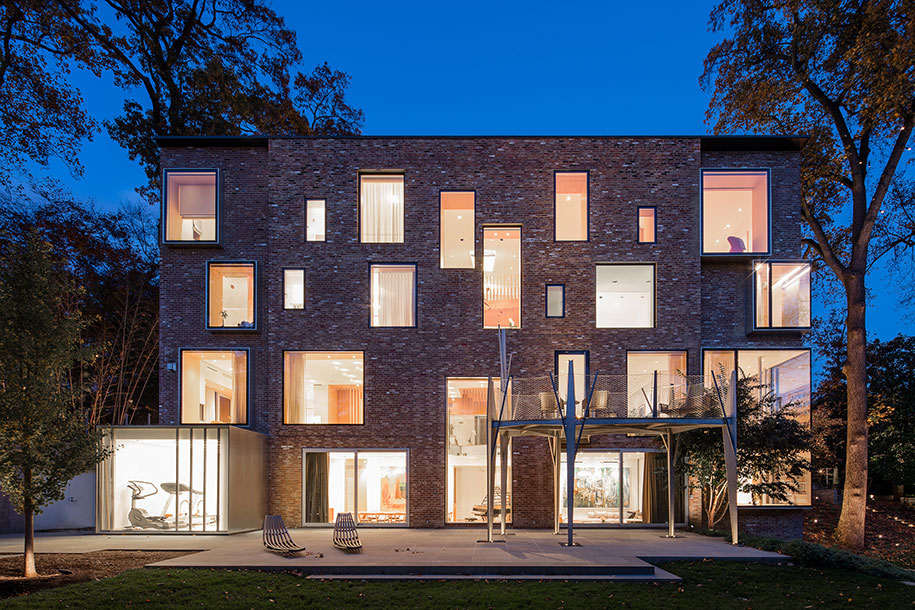
Facts & Credits:
Architects: NADAAA
Project location: Washington D.C.
Gross Built Area: 10,200 sf
Photo credits: John Horner
Team:
Principals: Nader Tehrani; Katherine Faulkner, AIA
Project Manager: Harry Lowd
Project team: Sarah Dunbar, Remon Alberts, John Houser, Stephen Saude, Jonathan Palazzolo, Lisa Lostritto, Parke Macdowell, David Richmond, Dane Assmusen, Ghazal Abbasy-Asbagh, Mehdi Alibakhshian, Sina Mesdaghi, Tom Beresford, Dan Gallagher
Structural Engineer: SGH
Mechanical Engineer: Allied Consulting Engineering
Contractor: Abdo Development
Lighting: Hinson Design Group
AV and Integration: Bethesda Systems
Millwork: CW Keller Associates
Landscape Architecture: Landworks Studio
Photography: John Horner
READ ALSO: A House in Paros Embraces Art / Vazeos Petropoulos - Maria Demetriadis